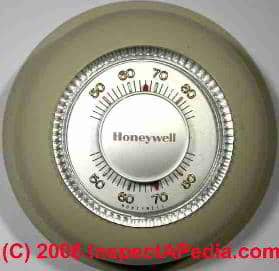 Reduce Home Heating Costs
Reduce Home Heating Costs
These Heating Cost Savings Tips Offer Significant Money Savings
- POST a QUESTION or COMMENT about how to reduce home heating costs
How to reduce building heating costs:
In this article, we give useful steps to reduce building heating costs. We also give the priority of action: what you should do first to save the most money regardless of how you heat your home: oil, gas, electricity, heat pump, solar, etc.
At the end of the article, we include additional key articles providing detailed heating and other energy savings advice for buildings.
InspectAPedia tolerates no conflicts of interest. We have no relationship with advertisers, products, or services discussed at this website.
- Daniel Friedman, Publisher/Editor/Author - See WHO ARE WE?
How to Cut Heating Bills - Energy Savings Tips
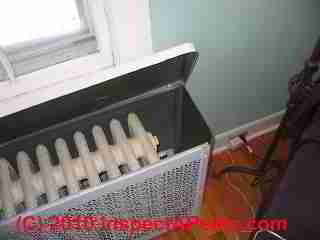 Article Contents:
Article Contents:
- PRIORITIES of ACTION FOR HEAT COST SAVINGS
- START at the THERMOSTAT
- CHANGE OTHER HEATER SETTINGS?
- SERVICE the HEATER - DON'T RUSH
- ALSO SERVICE OIL TANK, FILTER & FUEL LINES
- FANS CAN CUT or INCREASE HEATING BILLS
- MORE TECHNICAL HEATER TUNE-UP IDEAS
Surprising as it may seem, considering the high price of oil or gas for home heating, you'd think that everyone would have already maxed out their heating system's tuning ability. But most people have not optimized their heating boiler or furnace setup nor taken full advantage of other things they can do to save money on heat.
In our opinion, the most basic reason is that most folks have little idea what's going on with their heating system, they are a little afraid of it (it's making noise and there's a fire in there!), and worst, people don't realize the very wide range of conditions under which an oil burner will keep running.
From my days as a heating tech, I recall seeing the efficiency of an ordinary low-speed oil burner change from 61% up to 77% following a careful system cleanout and tune-up, even without any special modifications to improve the system's operation.
That's a 26% reduction in heating cost from just this single step! Put another way, after a simple heating system boiler or furnace cleaning and tune-up, you just stopped sending 26 cents on the dollar of your heating money right up the chimney rather than into your house as heat.
There are a number of service-technician-level hints and other money saving steps that a normal homeowner might perform.
Gristick's book Certified HVAC Technicians Home Heating And Safety Secrets Revealed! contained a number of good suggestions that can significantly reduce heating costs for oil-fired heating equipment.
The bottom line: We discuss some of his suggestions and add heating and energy cost savings tips of our own that can save you plenty of money on your heating bill for all types of heating systems.
...
Top Priorities of Actions for Heat Cost Savings
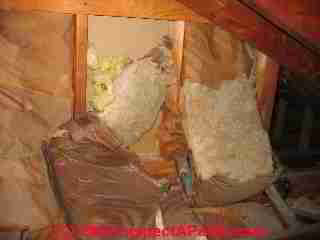 Readers may also want to place this idea of tuning up their heating system
to save heating cost in the larger energy savings context: overall here are the five top heat cost savings topics, in order of priority:
Readers may also want to place this idea of tuning up their heating system
to save heating cost in the larger energy savings context: overall here are the five top heat cost savings topics, in order of priority:
- Stop drafts -
Find and fix every air leak that you can, starting by simply feeling around windows and doors on a cold windy day. Leaky door or window gaskets on many buildings add up to the equivalent of leaving a window wide open in cold weather!
If you don't take this first step, the cost savings gained by tuning up your heater or even adding insulation is likely to be overwhelmed by those leaky windows and doors.
Put another way, it doesn't matter how much insulation you've got if a window is being left open on cold days!
See AIR & HEAT LEAK FIXES - find and fix air leaks
And HEAT LOSS in BUILDINGS - topic home page - how to find and fix places where a building is wasting heat or energy
or if you want to get more sophisticated,
See THERMAL IMAGING, THERMOGRAPHY - for more sophisticated methods for finding the leak points or poorly insulated areas of a structure - Insulate the attic or uppermost ceiling
Once we've stopped building drafts, especially at windows and doors, check the amount and completeness and neatness of the insulation in your building attic or under the roof. How much insulation is there? Are there voids, gaps, or areas of missing insulation?
Since warm air and heat tend to rise in buildings, a continuous insulating blanket at the building's uppermost ceiling, or in some buildings, right under the roof, is very important. - Insulate walls
Insulating walls with similar care is second to insulating the attic or top ceiling in a building. After heat loss through building ceilings comes heat loss through walls.
To learn about best building insulation practices start
at INSULATION INSPECTION & IMPROVEMENT - where & how to improve building insulation to save on heating cost - Insulate the basement?
Since heat and warm air tend to rise up and out, the basement is a more distant third area in priority after upper building areas.
See BASEMENT HEAT LOSS - energy efficient basements: insulation, air leaks, other steps to cut heating costs - Then tune the heating system - probably falls in between attics and walls and for sure is
before insulating a basement except for stopping rim joist drafts.
Read more about these energy savings methods for your home at
More Efficiency at the Heating System
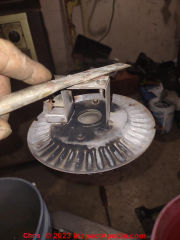 I would prioritize these heating cost savings topics in order of probable economy and work on them in
that order:
I would prioritize these heating cost savings topics in order of probable economy and work on them in
that order:
- Clean and tune the heating system
If the oil burner or gas burner is not operating properly you are wasting money every time the system runs. - Set back the thermostat
We discuss this in more detail
At SETBACK THERMOSTATS - Buy cheaper oil or contract for cheaper gas in summer
Depending on where you live and who supplies your heating fuel, it may be possible to contract for fuel purchase during off-season at lower prices.
Some owners of buildings using oil or gas fuel for h eating install additional fuel storage capacity to take advantage of summer prices. But often simply entering into a price-discounted fuel purchase contract will be sufficient. - Hot Air Heat (Furnaces)
Change the air filters monthly when the system is in use. A blocked air filter drastically reduces air flow and significantly increases the length of time your furnace has to run to warm up the home.
See AIR FILTERS for HVAC SYSTEMS - home
...
Heat Savings can Start at the Thermostat
Use the Thermostat Setback Feature
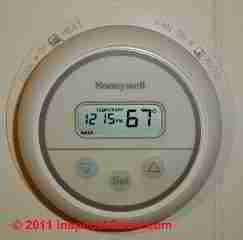 We cannot overemphasize the importance of this simple
suggestion: setting back a thermostat is a money-saving step well within homeowner control.
This is one of the most famous and most effective heating
cost savings tips known. One degree of set-back saves about 1% on heating cost.
We cannot overemphasize the importance of this simple
suggestion: setting back a thermostat is a money-saving step well within homeowner control.
This is one of the most famous and most effective heating
cost savings tips known. One degree of set-back saves about 1% on heating cost.
Typical sources we researched such as the US DOE tell us that you can cut your heating bills by "as much as" 10% a year simply by turning your heating thermostat back 7-10 degF overnight or for about eight hours each day.
You can improve on this idea: install and use an automatic setback thermostat that will
automatically lower your heat settings when you're
not at home or when you're asleep.
Details are at THERMOSTAT SETBACK ADVICE
Various companies also offer online calculators that can be used to compute how much money you're
likely to save by setting back your thermostat.
For example, if your normal thermostat setting is 70 °F. and you set it back to 60 °F. and if during that time the outside temperature is hovering at 40 deg F., you will use about 33% less energy during that period.
More information is
at THERMOSTAT SETTING INSTRUCTIONS
Resource:
- U.S. Department of Energy, Programmable Thermostats [DOE web page] - Office of
Energy Saver
Office of Energy Efficiency & Renewable Energy
Forrestal Building
1000 Independence Avenue, SW
Washington, DC 20585 USA, retrieved 2024/03/11, original source:
Excerpt:
You can save as much as 10% a year on heating and cooling by simply turning your thermostat back 7°-10°F for 8 hours a day from its normal setting. The percentage of savings from setback is greater for buildings in milder climates than for those in more severe climates.
The smaller the difference between the indoor and outdoor temperatures, the lower your overall cooling bill will be. You can easily save energy in the winter by setting the thermostat to around 68°F to 70°F while you're awake and setting it lower while you're asleep or away from home.
In the summer, you can follow the same strategy with central air conditioning by keeping your house warmer than normal when you are away, and setting the thermostat to a setting as high as is comfortable for you when you are at home and need cooling and to ensure humidity control if needed.
...
Should You Reduce Boiler Operating Temperature?
Reducing boiler temperature is more of a a mixed bag: setting boiler temperature down is not unequivocally going to save you money.
Suppose you have modern baseboard hot water heat. The thermal conductivity of finned copper
baseboard is exponentially greater as the temperature increases - so you get
much better heat transfer out of a baseboard heater as the boiler temp is set up higher.
So if you set the system specs too low you may get shorter boiler on-cycles
which is like running a car on choke - wasting fuel by not letting the unit
have as big a percent of its operating cycle run when it is fully warmed-up.
Details are at
What about Other Heating Boiler or Furnace Control Settings?
It's tempting to fool with the settings on your heating system's controls, changing temperature limits for example. But we don't recommend fooling with anything other than your thermostat. On programmable models, you'll usually find that you can set up an automatic night-time set-back temperature.
Using that feature is perhaps the single most significant way you can cut your home heating costs. Details begin on this page
A nightmare feared by many heating service technicians is an untrained homeowner fooling around with their heating system.
Otherwise,
Watch out: if you are not properly trained, you may injure yourself or cause the heating system to operate unsafely.
On the other hand, if you are familiar with these suggestions, you will be in a better position to discuss them with your heating service technician at your next heating service call.
Watch out: it is not possible to properly tune an oil burner and probably impossible to properly adjust and tune a gas burner on a home heating boiler or furnace without both the proper tools and some actual training on how to use them.
...
Service the Heater Properly
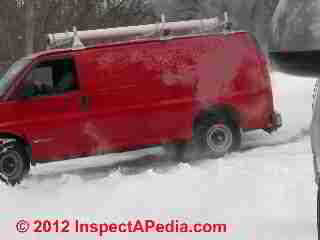
It's important for home owners to look at the money savings aspect of heating service and tuning.
It's the homeowner who pays the oil bill, not the service technician who tunes your boiler. Even though most service techs take pride in their work and work to do a good job of cleaning and tuning the system, service techs, at times, can rush through the process and leave unsafe or unsatisfactory conditions.
There are several reasons for this, one of which is that the techs are usually over scheduled and overworked during the heating season. A heating service technician during the winter months may be expected to make 8 or 12 service calls in a day. It's impossible to perform a thorough, detailed cleanout and tune-up in just a few minutes.
So sometimes the technician will see a system that seems to be pretty clean and running pretty well, and s/he will just do the basics of filter and nozzle change.
Rushed Heating Service & Home Heating Cost
In our photo above, the heating service tech was in our home for about eight minutes, and then I spotted him rushing to leave the job, spinning his tires on the pavement and smoking up the driveway. Fortunately the heating company is a good one and their service manager sent a better man to finish the job right.
We want to listen to and watch the heating service tech. For an oil fired heating system, if you don't hear a vacuum cleaner running, if there is no disassembly of any heating system parts for inspection and cleaning, if no one even changes the oil filter, then the service call is not going to reduce your heating costs. In this case, speak respectfully and calmly with your service technician.
I've even offered (DF) to pay the technician extra if she or he will actually clean the the system thoroughly and review its control settings and performance measurements. So far, with that conversation, it has not been necessary.
Watch out: if your oil fired heater is sooty, you may be paying much more than necessary for heat. In tuning an oil burner system, I (DF) have seen as much as a 50% improvement in the system's energy efficiency.
SOOT on OIL FIRED HEATING EQUIPMENT - discusses soot on or inside oil fired heating equipment and its effect on heating costs and heater operating problems.
Watch out: if your gas-fired heating equipment is producing visible soot, it is unsafe and should be shut down and you should call for emergency repair. Sooting gas fired equipment is likely to be producing dangerous, even potentially fatal carbon monoxide gas.
Details are
...
Oil Tank, Filter & Fuel Lines (supplies fuel to burner)
- Oil Filter Maintenance:
should be part of regular annual maintenance on oil fired heating equipment - boilers or furnaces. Else you risk loss of heat during the heating season.
Details are
at FILTERS, OIL on HEATING EQUIPMENT - Outdoor aboveground oil tanks:
Indoor type oil tanks (almost any 250 or 275 gallon oil tank) used outdoors are not, or at least historically were not UL listed for that location.
Worse, in cold areas you risk heating oil gelling or water accumulation in the outdoor tank exposed to changing and cold temperatures. Water in an oil tank or gelled heating oil means loss of heat in cold weather. - Heat tapes which some folks install on oil tank lines
on outdoor tanks can be a fire hazard if not properly installed or if the wrong type.
You can avoid fuel jelling by using a kerosene mix (just ask your oil delivery company, but it costs more), or use "4-in-1 Hot" (or an equivalent product), an oil additive that protects against jelling and also reduces water. Still better, enclose the outdoor oil tank and give it enough heat to avoid gelling.
See HEAT TAPES on OIL TANK PIPINGFor more information about oil tanks, oil tank leaks, and underground oil storage tanks
see OIL TANKS - Heating Oil Underground & Above ground Oil Storage Tank Leaks, Testing, Problems & Solutions, Home Buyer's / Home Owner's Guide.
Sketch above provided courtesy of Carson Dunlop Associates, a Toronto home inspection, education & report writing tool company [ carsondunlop.com ].
Gristick included a great tip on cleaning the oil tank fill vent screen. I've rarely seen this point mentioned.
But when your oil company is filling the tank it's done under pressure.
A clogged tank vent can lead
to over pressurizing the oil tank, leading to a costly oil leak. Undersized oil tank vent lines can also
lead to this problem and to a blown oil tank. It happens for real.
...
Use of Various Fans can Cut or Increase Heating Bills
Gristick recommended minimizing the usage of kitchen and bath exhaust fans. That sounds right for exhaust fans or for supply air fans that don't include a heat exchanger.
But that advice was over-simplified and can also cause trouble: In some buildings, if you abandon the use of vent fans, you will generate a very expensive mold problem.
Let's distinguish among
- Exhaust fans
(blow indoor air to the outside) (increasing heating cost when makeup outdoor air is actually drawn into the building from air leaks in the building envelope) - Supply air ventilation fans
(blow outside air indoors to improve indoor air quality) (increasing heating cost) - Balanced ventilation fans
that use a heat exchanger to warm outdoor air coming in so as to not blow heat outdoors in the heating season (so won't hurt home heating cost)
See VENTILATION, BALANCED HEAT COST SAVINGS - Ceiling fans
that circulate indoor air, moving it upwards or downwards in rooms depending on the fan blade rotating direction.
Ceiling fans save energy but increase the airborne particle level perhaps 100 times - a problem for IAQ if the building is not clean and/or if there are IAQ-sensitive occupants.
A ceiling fan, especially in a room with tall ceilings, can push warm air down to the level of building occupants during the heating season, increasing their comfort and cutting the heating bill.
But if your building is dusty you may need to do some additional cleaning, and if you are using forced air heat, you may need to clean, change, or improve your air filter system to reduce indoor dust levels.
- Furnace air handler fan
while not a building fan that you normally see, if your heat is by forced warm air furnace, inside the air handler is a squirrel cage blower fan that moves building air through ductwork and across the furnace heat exchanger.
If this blower fan is even a little bit dirty it will move much less air and your furnace will have to run longer to heat your building. Ask your heating service tech to inspect and if appropriate, clean this fan every few years.
See BLOWER FAN ASSEMBLY CLEANING
Bottom line: if your building uses a fresh air ventilation system, a balanced ventilation system is best for cutting heating cost. If your building has ceiling fans, using them to push warm air back down to occupants can also cut heating cost.
...
More Technical Heater Tune-Up Details
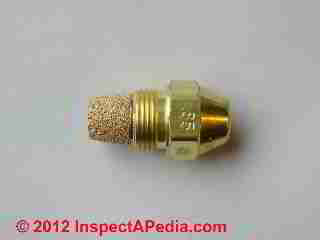 In addition to Mike's tips, we suggest you discuss the following items with your heating service rep:
In addition to Mike's tips, we suggest you discuss the following items with your heating service rep:
- Oil burner nozzle size & fuel unit pressure setting:
On old 100-psi low-speed (1725 rpm) units, I used to drop the nozzle one size and set up the fuel unit pressure to 120 psi - which gave better atomization and the equivalent BTUH at a lower flow rate.
This should be tried only by a trained tech. Most new oil burners run at higher speed (3450 rpm) and many are running at higher nozzle pressures for better atomization and thus better fuel combustion.
See OIL BURNER FUEL UNIT
See OIL BURNER NOZZLE GUIDE
- When to measure oil burner efficiency:
If you are measuring efficiency of your current unit in deciding about buying a new one, it is absolutely essential that you first get the existing unit cleaned and properly tuned and set up. It is inaccurate and terribly misleading to compare an old cast iron boiler that is dirty and maladjusted and stumbling along at 60% with a new higher efficiency unit that promises 80% (which would be a 1/3 improvement).
First we clean and perfect the older unit. If the old unit can be tuned up to 75% or better, the value of that additional 5% of a new unit is a 12% improvement not a 33% improvement, and the payback in years is accordingly 3 times longer. - Older style cast iron radiators:
Give an added chance to save on heating cost since each radiator is in effect its own little heating zone. You can shut down or off in unused areas or install thermostatic valves (long payback).
Just be careful not to turn off so much heat that you freeze a pipe. - Fireplaces and heating cost:
Fireplaces when in use, or even if not in use if the damper is left open, are a HUGE net heat loss to the home unless they are running an airtight system and using an outside combustion air source.
For an older, conventional fireplace, you can reduce the fireplace heat loss by installing a glass door (kept closed) and by giving the fireplace outside combustion air (required by code in new homes). - Safety: Chimneys and flues
Can be killers if they are not kept clean, unblocked, and safe. On chimney cleaning, if your heating boiler vents through a "dead-end flue" which lacks any opening or chamber below the point at which the boiler vent connector passes into the chimney, any trash that falls down the flue blocks it and risks improper or unsafe heating system operation.
Ask your heating service technician or a chimney sweep to check your chimney for safety and cleanliness.
...
No Longer Possible to Buy this Book on Saving Money on Heating Costs
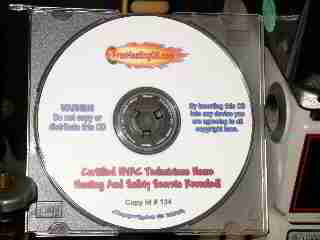
Although the book by Michael Gristick is no longer available (thanks to InspectApedia reader CC for bringing this to our attention in January 2023), the book had good tips for the heating service tech on safety, particularly on safety steps that should be observed during the process of servicing a heating system.
The chapters of this book are outlined below. We have addressed all of these topics above and in separate articles at InspectApedia.
Chapter 1: Getting Started, Tools You'll Need
Chapter 2: Training -
see HEATING SYSTEM INSPECTION, TROUBLESHOOTING, REPAIR GUIDE
Chapter 3: Thermostat (controls temperature of your home) -
see THERMOSTAT SETTINGS
Chapter 4: Oil Tank, Filter And Fuel Lines (supplies fuel to burner) -
see HEATING OIL STORAGE TANK INSPECTION PROCEDURE
Chapter 5: Oil Fired Burners (explanation of oil burner and repair procedures) -
see OIL BURNERS
Chapter 6: Hot Water Boilers explanation of hot water boilers and repair procedures) -
see HOT WATER BOILER GUIDE
Chapter 7: Horizontal (Low Boy) And Vertical Hot Air Furnaces (explanation of forced hot air furnace and repair procedures) -
see DIAGNOSE & FIX HEATING PROBLEMS-FURNACE - home
Chapter 8: More Money Saving and General Tips
Chapter 9: Oil Heat Testing And Supply Link
Reader Comments, Questions & Answers About The Article Above
Below you will find questions and answers previously posted on this page at its page bottom reader comment box.
Reader Q&A - also see RECOMMENDED ARTICLES & FAQs
Question: how many gallons of heating oil per unit per winter should I be burning in a ten family apartment building?
I own a 10 family apartment building in New Rochelle, NY I have an old burner (40 years old) but have new windows, attic is insulated, new heat timer panel, etc. How many gallons of oil (average) per unit, per winter season should I be burning? - J.S. 5/28/2013
Reply:
A competent onsite inspection by an expert usually finds additional clues that help accurately diagnose a problem or in this case permit a reasonable estimate of heating fuel usage, both actual and target levels, by knowing something about the building. In the case of your email, with not a shred of data about the building, nor about its heating system I'm sorry to say that ANY guess would be pure nonsense.
That said, here are some things to consider in trying to get at the question that I suspect underlies the one you posed: is the heating system working properly, has the fuel consumption rate changed, and is there something you should be doing to address heating costs:
When we know absolutely nothing about a building or its heating system we cannot estimate the building heat loss rate, we don't know the heating system's theoretical efficiency or BTUH consumption rate, the building occupancy, thermostat settings etc. But nevertheless there is one easily obtained data set that can be helpful.
Call your heating oil supplier and ask for a record of your fuel delivery dates and quantities for the past two years along with degree day data. Your heating company uses a combination of degree days (average temperature and thus average call for heat) and the history of fuel consumption rate for your building in order to calculate when your building needs its next fuel delivery.
With both degree-day history for your immediate locale and the fuel consumption rate history for your building, you can quickly see if the heating fuel consumption rate has changed for your building.
If the consumption rate has increased, for example, you might look for causes that might include such factors as:
- change in condition of the heating system: it's state of tune, cleanliness, adjustment and thus performance
- change in building occupancy: calls for heat
- changes in building usage: occupants leaving windows open
Separately you can and should approach the heating cost savings method with some sense of priorities: what steps should be taken first to reduce heating cost?
To answer that fundamental question see the Recommended Articles below.
...
Continue reading at HEATING ENERGY SAVINGS PRIORITIES or select a topic from the closely-related articles below, or see the complete ARTICLE INDEX.
Or see these
Recommended Articles
- AFUE DEFINITION, RATINGS - buy high efficiency heating equipment
- CALCULATE BUILDING HEAT LOSS RATE
- DUCT SYSTEM DESIGN SIZE & DEFECTS
- ENERGY SAVINGS in BUILDINGS - home
- ENERGY SAVINGS PRIORITIES
- HEATING COST SAVINGS METHODS
- HEATING COST FUEL & BTU COST TABLES - comparison of current energy costs
- HEATING SYSTEMS - home
- INSULATION INSPECTION & IMPROVEMENT - home
- RADIANT HEAT FLOOR MISTAKES
- SOLAR ENERGY SYSTEMS - renewable energy design and equipment for energy efficiency
- THERMAL TRACKING - indicates heat loss
- VENTILATION, BALANCED HEAT COST SAVINGS
Suggested citation for this web page
HEATING COST SAVINGS METHODS at InspectApedia.com - online encyclopedia of building & environmental inspection, testing, diagnosis, repair, & problem prevention advice.
Or see this
INDEX to RELATED ARTICLES: ARTICLE INDEX to BUILDING ENERGY SAVINGS
Or use the SEARCH BOX found below to Ask a Question or Search InspectApedia
Or see this
INDEX to RELATED ARTICLES: ARTICLE INDEX to HEATING SYSTEMS
Or use the SEARCH BOX found below to Ask a Question or Search InspectApedia
Ask a Question or Search InspectApedia
Try the search box just below, or if you prefer, post a question or comment in the Comments box below and we will respond promptly.
Search the InspectApedia website
Note: appearance of your Comment below may be delayed: if your comment contains an image, photograph, web link, or text that looks to the software as if it might be a web link, your posting will appear after it has been approved by a moderator. Apologies for the delay.
Only one image can be added per comment but you can post as many comments, and therefore images, as you like.
You will not receive a notification when a response to your question has been posted.
Please bookmark this page to make it easy for you to check back for our response.
IF above you see "Comment Form is loading comments..." then COMMENT BOX - countable.ca / bawkbox.com IS NOT WORKING.
In any case you are welcome to send an email directly to us at InspectApedia.com at editor@inspectApedia.com
We'll reply to you directly. Please help us help you by noting, in your email, the URL of the InspectApedia page where you wanted to comment.
Citations & References
In addition to any citations in the article above, a full list is available on request.
- ASHRAE . (1982). Standard “Method of Testing for Heating Seasonal Efficiency of Central Furnaces and Boilers . ” ANSI/ASHRAE Standard 103 - 1982 , Approved by the ASHRAE Board of Directors on October 1, 1982 .
- ASHRAE . (2007). Standard “Method of Testing for Annual Fuel Utilization Efficiency of Residential Central Furnaces and Boilers . ” ANSI/ASHRAE Standard 103 - 2007, Approved by the ASHRAE Board of Directors on June 27, 2007.
- Brand , L. ; Rose , W. (2012) . Measure Guideline: High Efficiency Natural Gas Furnaces . Gas Technology Institute, Des Plaines IL, DOE/GO – 102012 - 3684 .
- Brand, L., (2012 ) “ Expert Meeting Report: Achieving the Best Installed Performance from High - Efficiency Residential Gas Furnaces , ” Gas Technology Institute, Des Plaines IL, 2012
- Burdick, A. (2011). Strategy Guideline: Accurate Heating and Cooling Load Calculations. Golden, CO : National Renewable Energy Laboratory. NREL/ SR - 5500 - 51603 .
- Hendron, R., Engebrecht, C. (2010), Building America House Simulation Protocols.” Golden, CO : National Renewable Energy Laboratory . NREL/ TP - 550 - 49426.
- Polly, B. ; Kruis, N. ; Roberts, D (2011). Assessing and Improving the Accuracy of Energy Analysis for Residential Buildings . Golden, CO: National Renewable Energy Laboratory. NREL/TP - 5500 - 50865.
- Yee, S., Baker, L., Brand, L., and Wells, J. (2013) “Energy Savings from System Efficiency Improvements in Iowa’s HVAC SAVE Program.” Chicago, IL: Midwest Energy Efficiency Alliance. DOE/GO - 102013 - 4 112 August 2013
- Fuel Oil & Oil Heating Magazine, 3621 Hill Rd., Parsippany, NJ 07054, 973-331-9545
- Domestic and Commercial Oil Burners, Charles H. Burkhardt, McGraw Hill Book Company, New York 3rd Ed 1969.
- Principles of Steam Heating, Dan Holohan, technical editor of Fuel Oil and Oil Heat magazine, 389 Passaic Ave., Fairfield, NJ 07004 ($12.+1.25 postage/handling).
- "Residential Steam Heating Systems", Instructional Technologies Institute, Inc., 145 "D" Grassy Plain St., Bethel, CT 06801 800/227-1663 [home inspection training material] 1987
- "Residential Hydronic (circulating hot water) Heating Systems", Instructional Technologies Institute, Inc., 145 "D" Grassy Plain St., Bethel, CT 06801 800/227-1663 [home inspection training material] 1987
- "Warm Air Heating Systems". Instructional Technologies Institute, Inc., 145 "D" Grassy Plain St., Bethel, CT 06801 800/227-1663 [home inspection training material] 1987
- Heating, Ventilating, and Air Conditioning Volume I, Heating Fundamentals,
- Boilers, Boiler Conversions, James E. Brumbaugh, ISBN 0-672-23389-4 (v. 1) Volume II, Oil, Gas, and Coal Burners, Controls, Ducts, Piping, Valves, James E. Brumbaugh, ISBN 0-672-23390-7 (v. 2) Volume III, Radiant Heating, Water Heaters, Ventilation, Air Conditioning, Heat Pumps, Air Cleaners, James E. Brumbaugh, ISBN 0-672-23383-5 (v. 3) or ISBN 0-672-23380-0 (set) Special Sales Director, Macmillan Publishing Co., 866 Third Ave., New York, NY 10022. Macmillan Publishing Co., NY
- Installation Guide for Residential Hydronic Heating Systems
- In addition to citations & references found in this article, see the research citations given at the end of the related articles found at our suggested
CONTINUE READING or RECOMMENDED ARTICLES.
- Carson, Dunlop & Associates Ltd., 120 Carlton Street Suite 407, Toronto ON M5A 4K2. Tel: (416) 964-9415 1-800-268-7070 Email: info@carsondunlop.com. Alan Carson is a past president of ASHI, the American Society of Home Inspectors.
Thanks to Alan Carson and Bob Dunlop, for permission for InspectAPedia to use text excerpts from The HOME REFERENCE BOOK - the Encyclopedia of Homes and to use illustrations from The ILLUSTRATED HOME .
Carson Dunlop Associates provides extensive home inspection education and report writing material. In gratitude we provide links to tsome Carson Dunlop Associates products and services.


